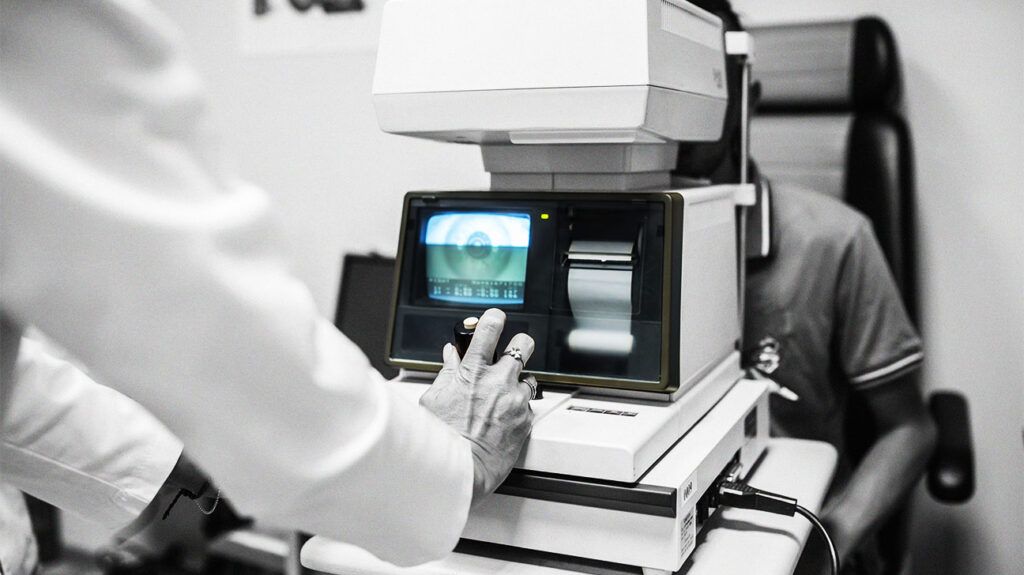Branch retinal vein occlusion (BRVO) is when a blockage forms in the veins branching off the retina, which can disrupt blood flow. Treatment depends on the type of blockage and severity of the damage.
BRVO mainly affects older adults and can lead to significant visual impairment.
In this article, we discuss what BRVO is, and its symptoms, causes, and treatment options. We will also answer some frequently asked questions about BRVO.

Branch retinal vein occlusion (BRVO) occurs when a blocked vein in the eye prevents blood from flowing away from the retina as it should.
The retina is the part of the eye responsible for capturing visual images. To process these images, the retina requires high quantities of blood.
The eye has one main artery to supply blood and one main vein to take it away. BRVO blocks a smaller vein branching off from the main vein, causing blood and fluid to leak.
This leakage can result in macular edema, which is when the part of the retina at the back of the eye swells up. Macular edema can affect a person’s central vision.
Over time, BRVO may also result in the death of nerve cells, which leads to vision loss.
BRVO
Other symptoms of BRVO can vary but may include:
- dark spots or floaters in the field of vision
- a loss of peripheral vision
- a sudden total loss of vision in one eye
BRVO also
Doctors often do not know what causes BRVO, but it can occur if a person has other conditions that affect the walls of the arteries, such as arteriosclerosis.
Arteriosclerosis makes the walls of the arteries thicker and harder, which may put pressure on nearby veins. It can be a result of long-term high blood pressure. Another possible cause is the formation of a blood clot within a vein.
A history of other factors that affect blood pressure and clotting may also raise the risk of BRVO, including:
- diabetes
- glaucoma
- blood clotting disorders
- cardiovascular disease
- smoking
BRVO usually happens in people who are aged 50 and older.
Developing BRVO in one eye also increases the risk of BRVO in the other eye to
Ophthalmologists diagnose BRVO with a thorough eye examination and imaging tests. Tests they may perform include:
- a dilated eye exam, which allows the doctor to examine the retina and optic nerve
- fluorescein angiography, which involves injecting dye into the bloodstream to highlight blood flow in the retina
- optical coherence tomography, which provides detailed images of the retinal layers to assess any swelling or damage
These tests provide images of fluid leaking from damaged or atypical retinal blood vessels, and may reveal:
- retinal hemorrhage, which is when blood leaks into the retina
- macular edema
- venous stasis, or the congestion and slowing of circulation
- ischemia, or inadequate blood supply to the retina
- retinal neovascularization, which is the atypical growth of new blood vessels in the retina
In addition to these tests, doctors may also order further tests to identify the underlying cause of BRVO, as this may require treatment too.
The treatment for BRVO focuses on keeping the retina dry, as this can prevent complications and slow vision loss. The options include:
- Intravitreal injections: Anti-VEGF (vascular endothelial growth factor) injections into the eye can help reduce macular swelling, which improves vision in around 1 in 2 people. To begin with, people may need these injections
once per month , but they can get less frequent if their vision improves. - Laser surgery: Focal laser surgery can burn small areas around the macula to stop fluid from leaking.
- Corticosteroids: If anti-VEGF injections do not work or are not suitable, corticosteroid injections or implants may help.
Depending on the cause of BRVO, people may also need further treatments, medications, or procedures.
Individuals should work closely with a doctor to determine the best treatment plan for their specific condition and overall health.
Below are answers to some frequently asked questions about BRVO.
How serious is branch retinal vein occlusion?
BRVO can be quite serious, as people with severe cases may experience significant vision loss. However, with early diagnosis and appropriate treatment, many people can maintain their vision.
What is the best treatment for branch retinal vein occlusion?
The best treatment varies depending on the individual’s condition. Intravitreal anti-VEGF injections are effective for reducing macular edema and improving vision, but they do not work for everyone.
Corticosteroid injections are another option. Laser treatments remain a cornerstone for managing complications, such as macular edema and neovascularization.
Can branch retinal vein occlusion be cured?
BRVO cannot be cured in the traditional sense, but people can effectively manage it with timely intervention and appropriate treatment.
Branch retinal vein occlusion (BRVO) is a retinal condition that can lead to vision impairment over time. It most often occurs in older adults but can affect anyone if a blockage develops in one of the eye’s veins.
BRVO can be asymptomatic, so it is important to get regular eye checkups and to maintain overall health, particularly for those with conditions that can contribute to eye conditions, such as hypertension.
Treatments cannot cure BRVO, but they may improve vision or slow vision loss. Anti-VEGF injections, laser surgery, or corticosteroids are potential options.
